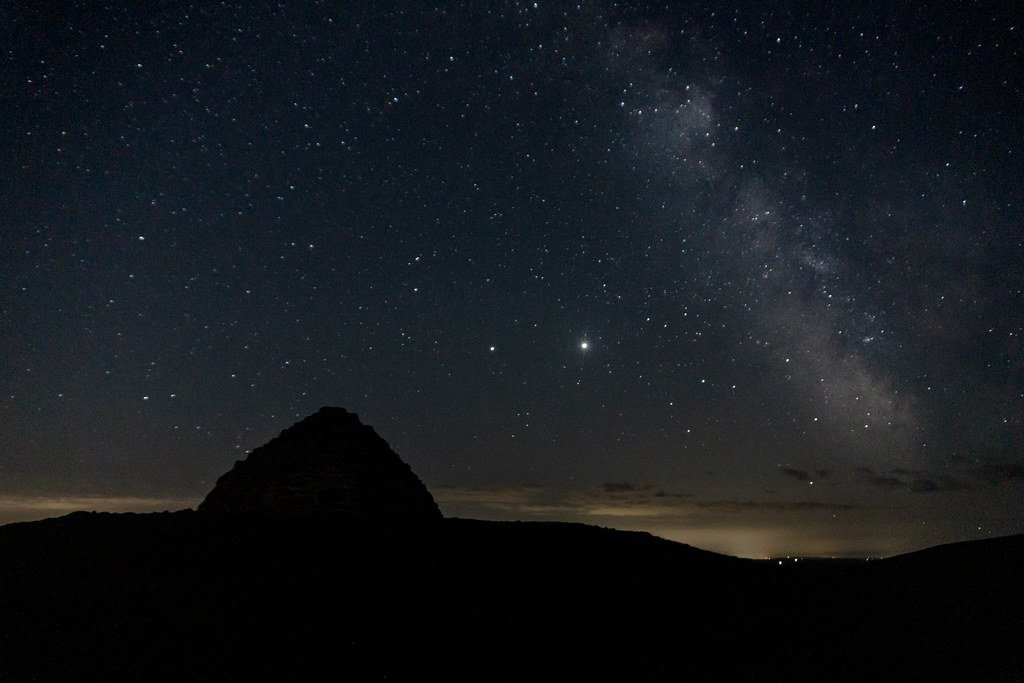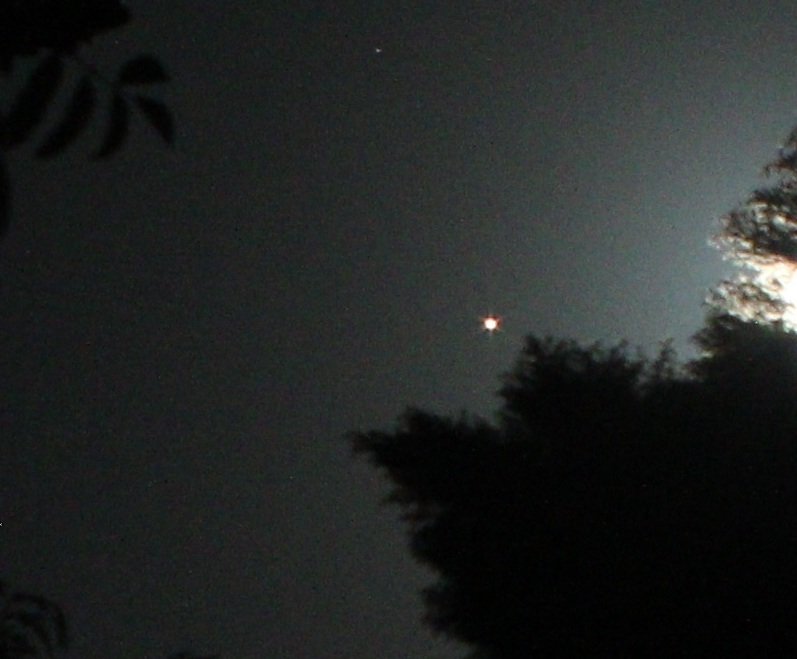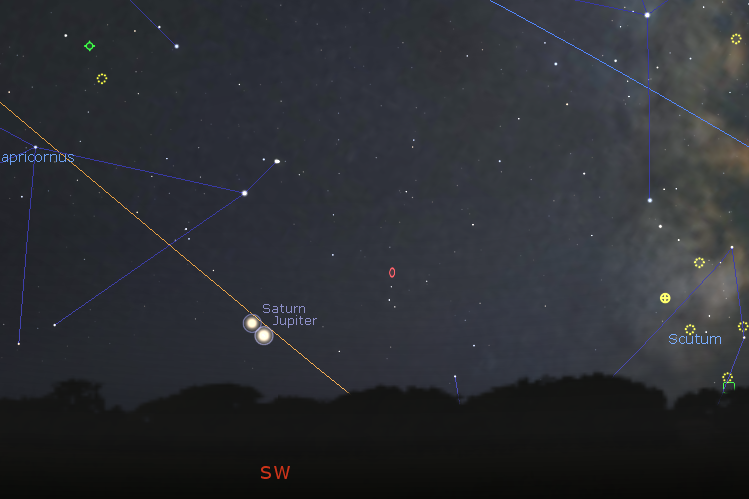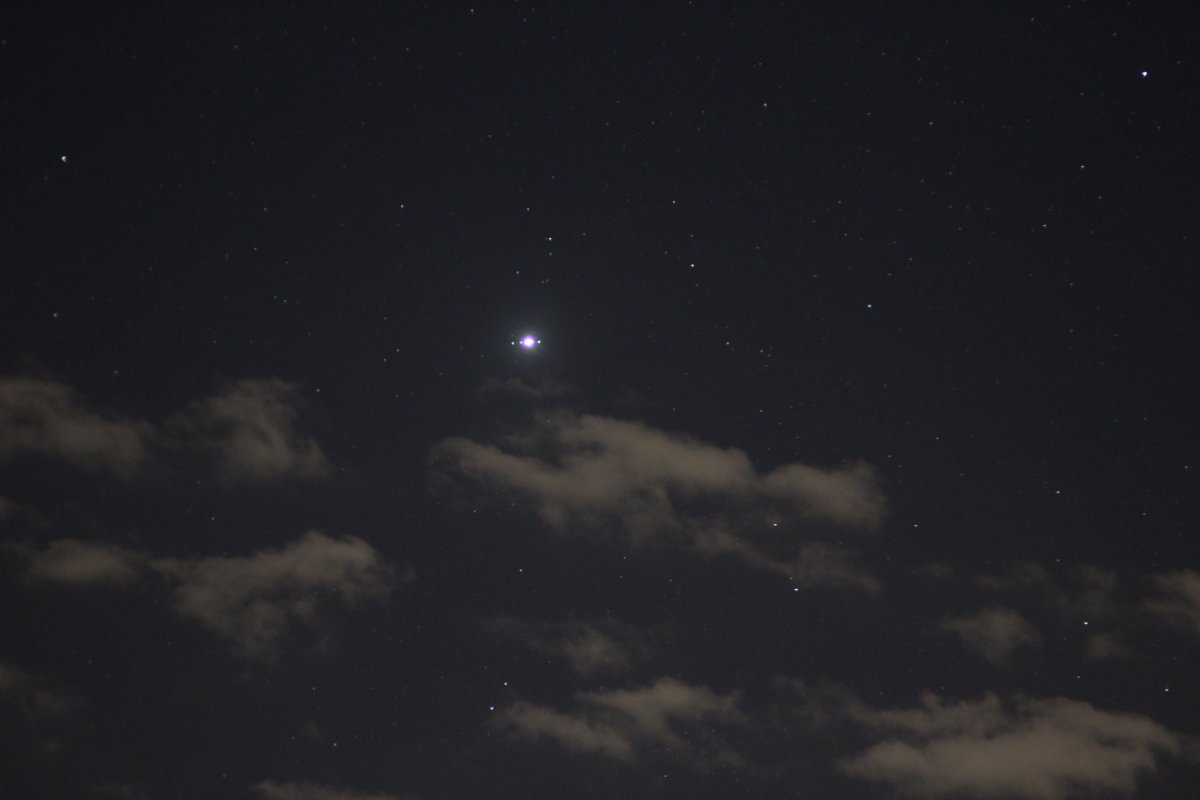
At dusk during the fortnight before Christmas this year, an intriguing event plays low in the western sky for those with an unobstructed view of the horizon. Stepping out into the night from 11 December, if the sky is free of cloud and light pollution we see stars beginning to appear around 5pm, as darkness descends. Travelling to your nearest dark sky site (government regulations permitting), increases your enjoyment of the star-strewn heavens – find maps such as the CPRE’s excellent UK dark skies chart.

In mid-December the brightest night-time objects, the crescent (waxing) moon and brilliant Mars (a pink or orange gem rather than a red one) are high and prominent in the south; but then the eye is drawn to two bright objects down in the west. The brighter of the two is yellowish Jupiter, ‘king of the planets’ to our distant ancestors. They couldn’t know that in reality it is the most massive of them all: more than 1,300 Earths could fit inside its gaseous bulk. Just above and to the left of Jupiter is the solar system’s second largest planet, Saturn, less bright but the more impressive of the pair when viewed through modest telescopes, when its icy rings become visible.
Hoping for clear skies in December!
Watch these two giant planets as the nights go by. Their paths, and especially that of the Earth, combine to bring them closer and closer in the sky, until by the 21st they appear as a single glittering object. Such very close meetings of Jupiter and Saturn are known as ‘great conjunctions’, and the last time they were so near to each other in the sky was in 1623. Already we are seeing claims on the internet that since Galileo was 59 at the time of the 1623 conjunction, and the telescope had been invented around the year 1600, it’s very likely he would have had a good view of it. However, at that time the event would have been hidden from him, lost in the solar glow at sunset.
This year the conjunction will be visible low down towards the south-western horizon, before the planets set at around 6pm. Some believe that Galileo lost his eyesight while observing the sun, or planets near it. However, he didn’t go partially blind until he was in his seventies, and this had nothing to do with the fierce light of the sun. Apparently, he had developed cataracts.

This year’s great conjunction is neatly centred around Christmas Week, providing a Christmas ‘star’ for 2020. The spectacle may well lead to discussions of the nature of the ‘star in the East’ in the biblical Book of Matthew. If it was indeed a miraculous supernatural indicator that led the Magi to Bethlehem and actually descended to pinpoint the Nativity stable, there’s an end to the matter. These days, powerful computer programs like the free download Stellarium can show us the night skies of the various years now thought to be candidates for the years of Jesus’ birth (favourites being from 7BC to 7AD). And we can explore what the Magi might have seen if the ‘star’ had been a true astronomical event. During those (biblical) years, there were conjunctions of planets similar to this year’s; but not necessarily in December. Debate is still lively as to which month it was that the birth took place. Jupiter and Saturn were close together three times in 7BC. In 6BC, Jupiter (the ‘kingly’ planet) was close to the moon in the constellation of Aries.
There were several celestial meetings in 3BC and 2BC. Jupiter and Venus were near the star Regulus (Latin, the ‘Little King’) in 2BC: Jupiter strikingly so. Jupiter and Venus had other close encounters, one of the most spectacular occurring in 5AD. Not all of these events would have been in the eastern sky, but Matthew was writing around 80 years later and few accurate records of these conjunctions would have been available. A more fragile oral tradition was most likely his source.

Was the ‘star’ a cometary omen? Halley’s Comet, which returns to Earth’s vicinity every 76 years, appears prominently on the Bayeux Tapestry during its April 1066 visit. It suggests a sinister warning above the head of Harold, as his advisor tells him of ships, shown below him, being built across the Channel by the Normans.
This most famous and reliable of comets was seen in 12BC. Astrologers in the far east reported a bright object, probably another comet, around 5BC. Comets, like the recent comet NEOWISE earlier this year, often look like curving fingers pointing towards the horizon. American astronomer Frank J. Tipler theorised in 2005 that the star of Bethlehem might have been a brilliant hypernova (an abnormally bright supernova) in the Milky Way’s neighbouring galaxy M31, the Andromeda Galaxy.
All aspects of astronomy, the oldest of the sciences, are now accessible electronically. Remember, though, that nothing matches the experience of gazing at the real night sky: at the twinkling stars whose light has been travelling to reach our eyes for tens, hundreds or thousands of years; at slowly moving planets; and at the Milky Way (stolen from most by light pollution), whose dark dust clouds are the ashes of long-dead stars, ashes from which our very selves are made.




